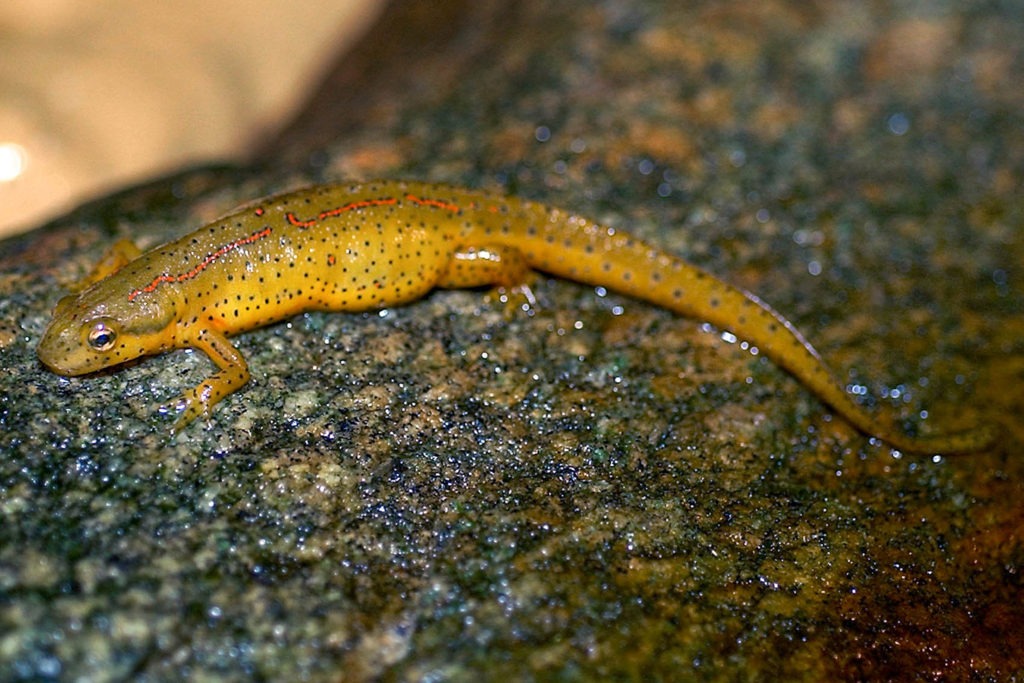Overview
“Where I live”
Eastern or red-spotted newts live in forested parts of eastern North America, in or near swamps, streams, ponds, and small pools of fresh water.
At the Maryland Zoo in Baltimore, visitors can see eastern newts in the Cave exhibit of the Maryland Wilderness.
“How I live there”
Eastern newts are most active during the warmer months of the year, and are often found hunting for food along the shallow edges of streams and ponds. They eat small aquatic insects and other invertebrates, as well as amphibian eggs. They rely mainly on sight, along with chemical cues, to locate prey.
During the coldest months of the year, depending on the area, adult eastern newts may leave the water for communal overwintering sites on land. In the spring, they migrate back to the same breeding ponds they inhabited the previous season.
Juveniles – known as efts – live entirely on land while adults are primarily aquatic. Efts are brilliant red or orange and are often encountered in the woods soon after rainfall. In drier weather, they usually take shelter under decaying logs or in moist leaf litter.
As eastern newts grow into adulthood, their color turns olive to dark green and they become camouflaged against the bottom of a stream or pool of water. If you examine adults closely, you will notice that many are speckled with small, dark red dots surrounded by black circles. Females tend to be lighter in color than males.
“Making my mark”
“Red efts,” as juvenile eastern newts are called, are stunning in appearance and impossible to miss as they walk along the forest floor.
Raising Young
Females lay eggs in the spring in quiet bodies of water. It can take a female up to a week to deposit all of her eggs. Each egg attaches to vegetation or some other object submerged in water. Many of the tiny eggs will be lost, including to predation by aquatic insects and leeches.
Larvae hatch from eggs in late spring or early summer after a 3 to 8 week incubation period. Larvae grow from about half an inch to one and a half inches, and transform into efts by late summer. Efts leave the water and live on land for one to three years. As they reach full maturity, they return to the water to breed and spend the rest of their lives there, apart from overwintering on land as needed.
“What eats me”
Red efts are thought to be brilliantly colored in order to advertise to potential predators that they are toxic. The juvenile salamanders produce toxic skin secretions when attacked, and many animals have learned not to eat them. Despite their toxicity, juveniles as well as adults are preyed upon by many animals, including birds, fish, insects, leeches, and other amphibians.
Conservation
Eastern newts are listed as a species of least concern by the IUCN, the world’s leading conservation organization.
Taxonomy
- Kingdom: Animalia
- Phylum: Chordata
- Subphylum: Vertebrata
- Class: Amphibia
- Order: Urodela
- Family: Salamandridae
- Genera: Notophthalmus
- Species: viridescens


